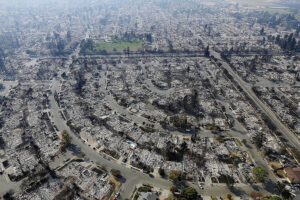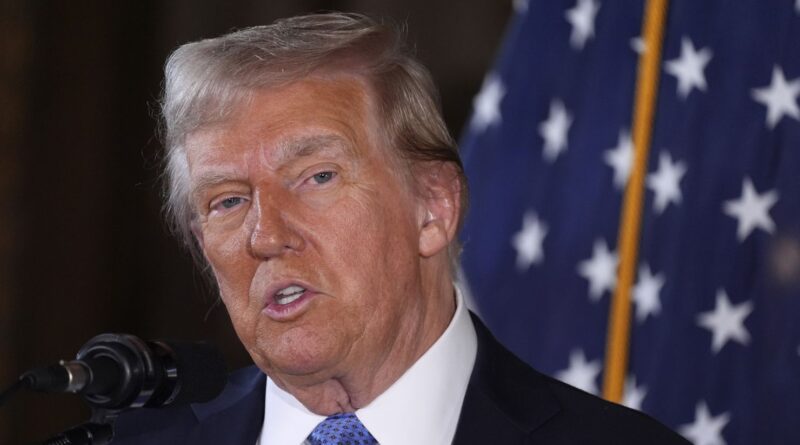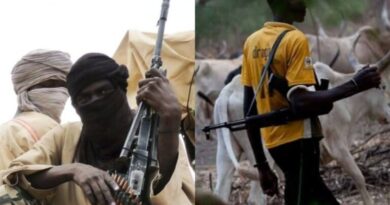Trump Criticises California Response To Wildfire
US President-elect Donald Trump escalated his criticism of California’s response to the wildfires ravaging the Los Angeles area on Sunday, as the state’s Governor, Gavin Newsom, challenged Trump to witness the devastation firsthand.
“The fires are still raging in L.A., and the incompetent politicians have no clue how to stop them,” Trump posted on his Truth Social platform. “This is one of the worst catastrophes in U.S. history. They can’t put out the fires—what’s wrong with them?”
Newsom, a frequent target of Trump’s attacks, responded during an interview on NBC’s Meet the Press, criticising the president-elect’s remarks while attempting to take a more diplomatic approach. “If we were to respond to every insult, we’d be here for another month,” Newsom said. “It’s something every elected official who disagrees with him knows well.”
However, in a notable shift, Newsom extended an olive branch. “I’ve invited him to come see the situation for himself,” Newsom added. “We’re extending an open hand, not a closed fist. After all, he is the president-elect.”
As of Sunday, Newsom confirmed that Trump had not responded to his invitation.
Donald Trump and California Governor Gavin Newsom, who has been considered a potential Democratic contender for the 2028 presidential race, have long been at odds, with Trump recently reviving his scornful nickname for Newsom—“Newscum.” In the past week, Trump has sharply criticised the state’s handling of the wildfires engulfing Los Angeles, fuelling tensions even further.
However, mindful of Trump’s previous threats to cut federal wildfire aid—particularly in a dispute over water management—Newsom moderated his approach. In a public letter shared on social media, Newsom appealed to Trump to put politics aside in the wake of the disaster.

“In the spirit of this great country, we must not politicise human tragedy or spread disinformation,” Newsom wrote. “I invite you to come to California again—to meet with the Americans affected by these fires, see the devastation firsthand, and join me and others in thanking the heroic firefighters and first responders who are putting their lives on the line.”
Addressing Trump’s earlier threat to cut off federal aid, Newsom remarked, “That’s his style… we take it seriously.”
California officials have faced fierce scrutiny from Trump, other Republicans, and residents impacted by the fires, who have raised questions about the state’s planning and preparedness. As of Sunday, the fires have claimed at least 16 lives, displaced 150,000 people, and destroyed more than 12,000 structures, according to state authorities.
Thousands of once-pristine homes have been destroyed, with many more teetering on the brink of being lost, Trump wrote in a post. “There is death all over the place,” he added, painting a grim picture of the destruction.
Despite the tireless efforts of firefighters, the Palisades Fire continued its relentless march, pushing east toward the heavily populated San Fernando Valley and threatening the priceless art collections housed at the Getty Centre.
On Sunday, as wind speeds surged, firefighters struggled to contain the expanding infernos around Los Angeles, with flames racing toward previously untouched neighborhoods. Aerial crews launched precision strikes, but the fires grew relentlessly, devastating the landscape.
In some areas, entire homes were reduced to ashes, and burnt-out cars leaked molten metal. In Mandeville Canyon, a home was engulfed by flames as a massive wall of fire spread across the hillside, threatening more structures.
Though there had been a brief lull in the winds, forecasters warned that gusts would soon intensify, fanning the flames and prolonging the crisis for days to come.
The National Weather Service warned that critical fire-weather conditions would intensify once again across Southern California today, likely persisting through at least early next week. “This could lead to the spread of current fires as well as the ignition of new ones,” the agency said.
As of Saturday, the Palisades Fire was 11% contained but had expanded to 23,600 acres (9,500 hectares), while the Eaton Fire had burnt through 14,000 acres and was 15% contained.
State officials reported that over 12,000 structures had been destroyed, though Cal Fire’s Todd Hopkins clarified that this figure included not only homes but also outbuildings, recreational vehicles, and sheds.
The growing need for housing in the aftermath of the fires is expected to place further strain on an already tight rental market. “I’m back on the market with tens of thousands of people,” said Brian, a resident whose rent-controlled apartment was destroyed. “That doesn’t bode well.”
With looting reports emerging and a nighttime curfew in effect, police and National Guard units have set up checkpoints to prevent unauthorised access to the disaster zones.
Two individuals were arrested near Vice President Kamala Harris’s Brentwood residence for violating a curfew order after police received reports of potential burglaries, according to local media outlets citing law enforcement sources.
In nearby Pacific Palisades, a handwritten sign reading “Looters will be shot” was posted on a tree beside the American flag outside a home, as tensions heightened amid the widespread destruction.
As the fires raged on, residents faced frustration and anxiety at security checkpoints set up around the evacuation zones. Many found themselves waiting in long lines—sometimes for up to 10 hours—desperate to return to their homes or check on their loved ones.
Bobby Salman, a 42-year-old resident from Altadena, was one of those prevented from entering the restricted area. “I have to be there to protect my family—my wife, my kids, my mom—and I can’t even go and see them,” he said, his voice thick with emotion.
The long delays have added to the growing frustration, with many residents accusing authorities of poor management. This latest frustration is compounded by previous complaints about hydrants running dry during the initial firefighting efforts, which left some areas more vulnerable to the flames.
Meanwhile, behind the scenes, tensions appeared to be brewing among city leaders. On Saturday, despite reports of internal conflict, officials put on a united front. Speculation swirled that Mayor Karen Bass had dismissed her fire chief, Kristin Crowley, after Crowley publicly criticised the department’s lack of funding and resources.
Among the victims of the devastating Malibu wildfires was former Australian child star Rory Sykes, best known for his role in the 1990s British TV show Kiddy Kapers. His mother, Shelley Sykes, shared the heartbreaking news on social media, writing, “It is with great sadness that I have to announce the death of my beautiful son, @Rorysykes, to the Malibu fires yesterday. I’m totally heartbroken.”
Search teams, assisted by cadaver dogs, have been combing through the charred remains of homes and buildings, as several people remain unaccounted for. The full scale of the tragedy is still unfolding, with authorities fearing that the death toll could rise as the search for the missing continues.
RELATED: California Wildfires: Over 137,000 Residents Forced to Flee
In response to the catastrophic loss, a large-scale investigation has been launched to determine the origin of the fires. The FBI, the Bureau of Alcohol, Tobacco, Firearms and Explosives (ATF), and local law enforcement, including Los Angeles County Sheriff Robert Luna, are all involved in the inquiry. “We are not going to leave any rock unturned,” Sheriff Luna said, underscoring the seriousness of the investigation.
While wildfires can be sparked by human activity, they are often a natural part of the life cycle of many ecosystems. However, rapid urban sprawl has placed more and more communities in harm’s way, as homes and businesses are built in fire-prone areas. The changing climate, exacerbated by humanity’s reliance on fossil fuels, has made conditions even more volatile, with extreme heat, droughts, and high winds fuelling the ferocity of such blazes. These factors have created a perfect storm, making wildfires more destructive and frequent than ever before.
As the recovery effort continues, communities are left grappling with both the immediate destruction and the long-term challenges posed by increasingly intense and unpredictable fire seasons. The tragedy has brought renewed attention to the intersection of climate change, urban development, and fire safety, with many calling for a reevaluation of how and where homes are built in areas vulnerable to such catastrophic events.
Content Credit| Agbetan Bisola
Picture Credit | https://edition.cnn.com/




